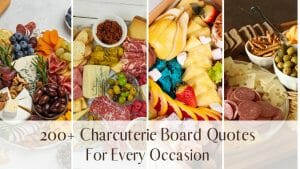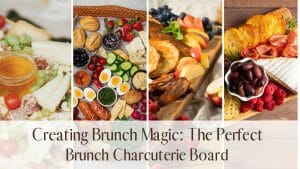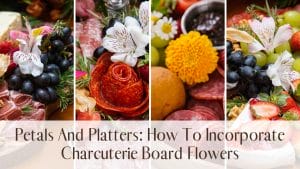Crafting delightful individual charcuterie boxes that captivate your customers and elevate your snacking game doesn't need to be hard. Whether you're a charcuterie business owner or a hobbyist, this step-by-step comprehensive guide will show you exactly how to select the perfect ingredients, create stunning arrangements, and personalizing your boxes for any occasion. We've even included our top list of online resources to help you source what you need! Get ready to impress your clients, friends, family, and taste buds with these delectable, bite-sized gourmet treats.
Become a charcuterie artist with the help of 514K enthusiasts and professionals. Click here for quick, easy lessons and community support >>
Table of Contents [CLICK HERE TO OPEN]
Step 1: Selecting the Right Ingredients
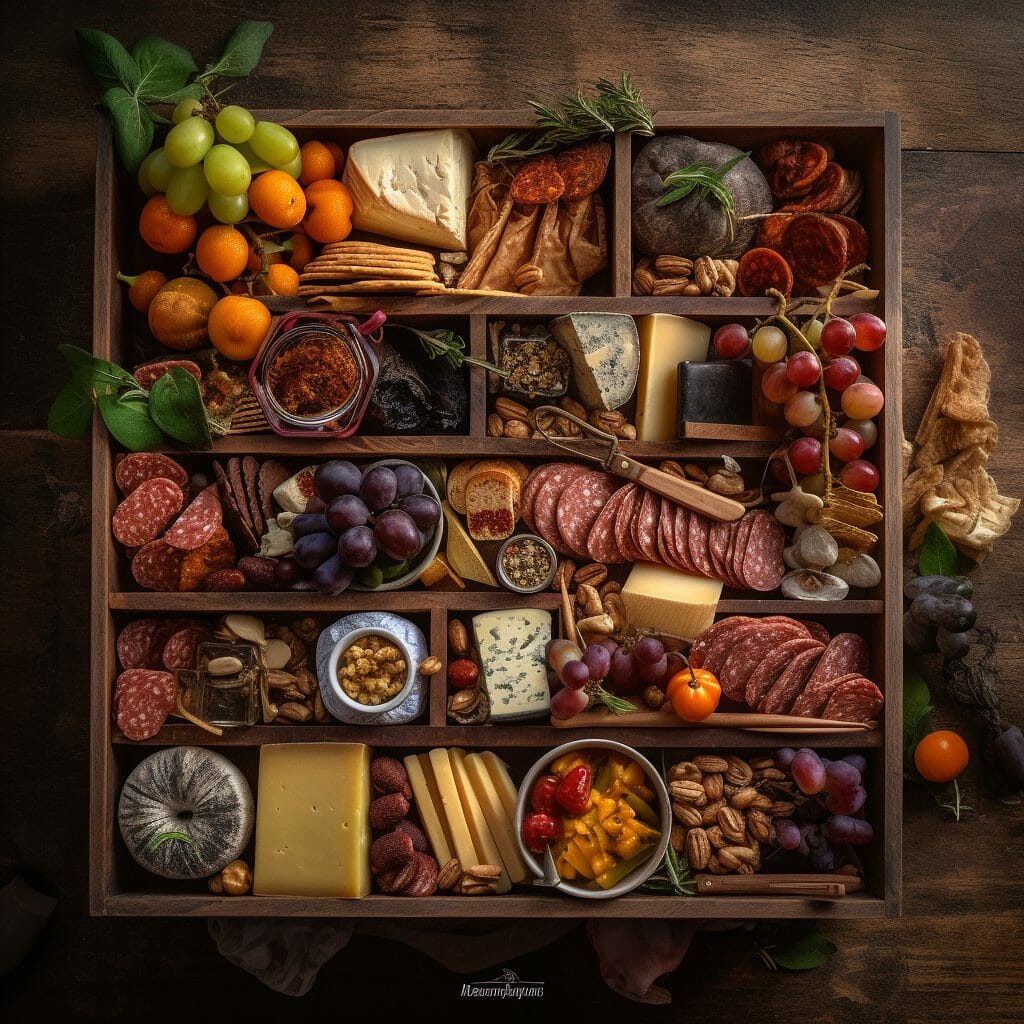
Creating a memorable individual charcuterie box begins with selecting the perfect combination of ingredients. Here's a breakdown of the essential components that make up a well-rounded charcuterie experience:
Choosing a variety of cured meats: A diverse selection of cured meats is the foundation of any charcuterie box. Opt for a mix of flavors and textures, such as prosciutto, salami, and pepperoni. Don't hesitate to explore lesser-known options like coppa, soppressata, or even bresaola to add a touch of uniqueness to your box.
Picking the perfect cheese assortment: Cheeses come in various textures and flavors, and a well-thought-out assortment can elevate your charcuterie box. Include soft, semi-hard, and hard cheeses, such as brie, cheddar, and gouda, to cater to different preferences. Experiment with artisanal cheeses or local varieties to add a personal touch.
Adding crackers or crusty bread: Crackers and bread not only provide a satisfying crunch but also act as a canvas for the other ingredients. Choose a mix of plain and flavored crackers or opt for crusty bread like a baguette to provide variety and complement the flavors of your meats and cheeses.
Incorporating fresh and dried fruits: Fruits add a pop of color, natural sweetness, and a refreshing contrast to the savory elements in your charcuterie box. Use fresh fruits like grapes, apple slices, or berries, and dried fruits such as apricots, dates, or figs for a delightful mix of textures and flavors.
Selecting nuts for added crunch: Nuts provide an additional layer of crunch and pair wonderfully with both meats and cheeses. Almonds, walnuts, and cashews are popular choices, but don't be afraid to include more unique options like pistachios or pecans.
Including accompaniments: Accompaniments like olives, pickles, and cherry tomatoes add a tangy, briny touch to your charcuterie box. These elements help cleanse the palate and enhance the overall tasting experience. Consider marinated artichoke hearts, cornichons, or even pickled vegetables for added variety.
Enhancing flavors: Lastly, spreads can amplify the flavors of your charcuterie box, adding depth and complexity. Sweet options like honey or fruit preserves work well with cheeses, while grainy mustard or tapenade can be the perfect accompaniment for cured meats.
By carefully selecting a harmonious mix of these essential ingredients, you'll create a well-rounded and delicious individual charcuterie box that is sure to impress.
Step 2: Presentation and Arrangement

An individual charcuterie box's presentation is just as important as its ingredients. A beautiful arrangement not only appeals to the eye but also enhances the overall tasting experience. Here are some tips to help you create a visually stunning presentation:
Selecting the ideal box or container size: The size of your box or container plays a crucial role in the overall presentation. Choose a box that comfortably fits all your ingredients without overcrowding or leaving too much empty space. Depending on the occasion and the number of people you're serving, options can range from small, single-serving boxes to larger containers for sharing.
Arranging ingredients for visual appeal: To create an eye-catching presentation, follow these simple guidelines:
Start with the largest items, such as meats and cheeses, and place them in separate areas of the box.
- Fan out slices of cured meats and arrange cheese wedges or cubes in an attractive manner.
- Fill in the gaps with smaller items like crackers, bread, fruits, and nuts, ensuring that they're easily accessible.
- Add pops of color by strategically placing fresh fruits, olives, or pickles throughout the box.
- Use small containers or ramekins for spreads and dips to keep them from mixing with the other ingredients.
Creating a balanced and harmonious presentation: A well-balanced presentation not only looks appealing but also ensures that each ingredient complements the others. Keep these points in mind while arranging your charcuterie box:
- Distribute the different textures and flavors evenly throughout the box to encourage exploration and variety in each bite.
- Group complementary ingredients together, such as placing a sweet spread next to a strong-flavored cheese.
- Pay attention to the overall aesthetic by mixing different shapes, sizes, and colors to create visual interest.
By carefully selecting the right container and thoughtfully arranging your ingredients, you'll create a visually stunning and harmonious individual charcuterie box that is as much a feast for the eyes as it is for the palate.
Step 3: Customizing Individual Charcuterie Boxes
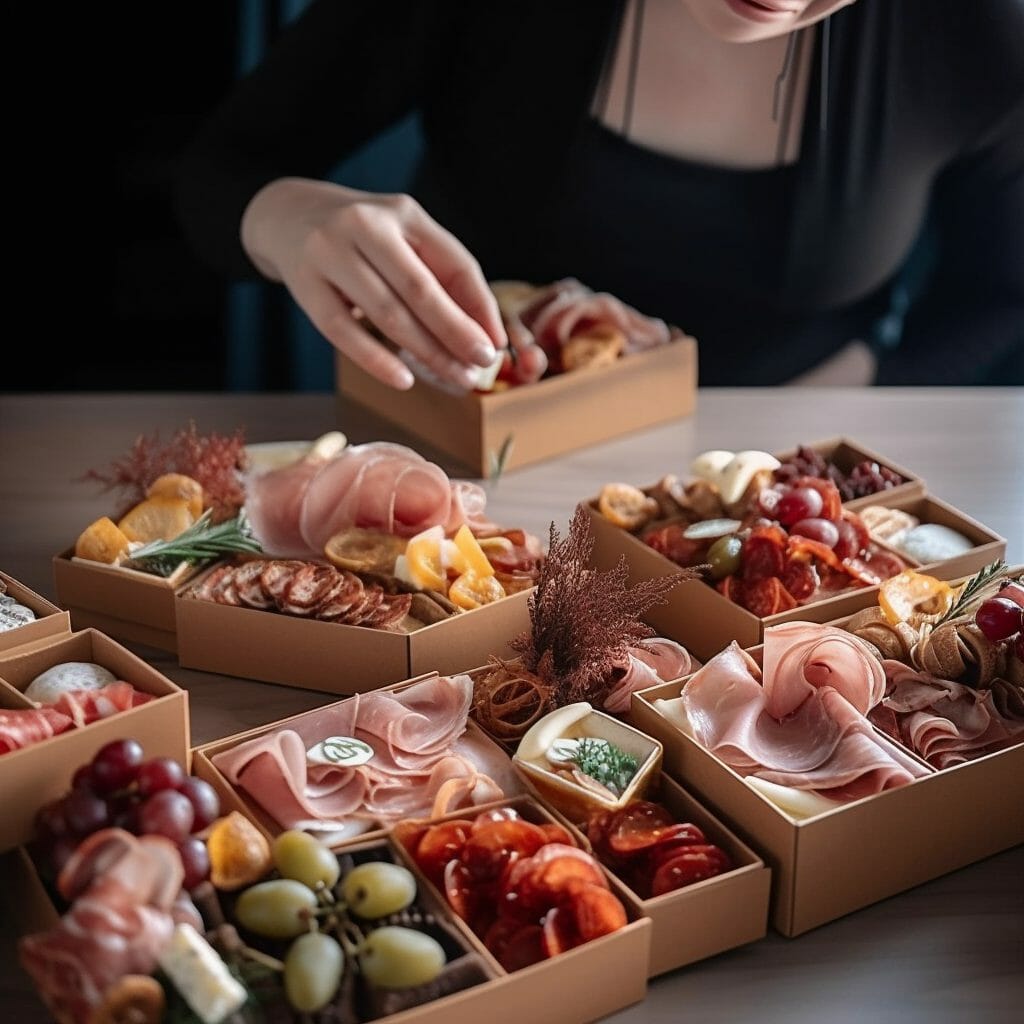
One of the most appealing aspects of charcuterie boxes is their versatility and potential for customization. By tailoring your box to specific themes, dietary preferences, or restrictions, you can create a personalized experience that is sure to delight. Here are some ideas for customizing individual charcuterie boxes:
Ideas for themed boxes: Themed boxes add a unique twist to the traditional charcuterie experience and can be designed around specific occasions, dietary preferences, or even color schemes. Some ideas for themed boxes include:
- Vegan: Replace meats and dairy-based cheeses with plant-based alternatives, such as vegan deli slices, nut-based cheeses, and vegetable-based spreads.
- Gluten-free: Swap out traditional crackers and bread for gluten-free varieties or opt for alternatives like rice cakes or seed-based crackers.
- Holiday-themed: Curate a box that reflects the flavors and colors of specific holidays, such as red and green for Christmas, or incorporate seasonal ingredients like cranberry chutney or pumpkin-spiced nuts.
Personalizing for dietary preferences: To cater to individual tastes or dietary needs, consider personalizing your charcuterie boxes by making the following adjustments:
- Nut-free: Eliminate nuts and replace them with seeds (e.g., sunflower or pumpkin seeds) or other crunchy options like pretzels or popcorn.
- Dairy-free: Opt for dairy-free cheese alternatives or simply focus on a meat-centric box, with extra accompaniments like marinated vegetables or pickled items.
- Low-carb: Remove crackers and bread from the box and replace them with low-carb options like cucumber slices, endive leaves, or roasted seaweed snacks.
By customizing your individual charcuterie boxes to suit specific themes or dietary preferences, you'll create a memorable and personalized experience that is both delicious and inclusive. The possibilities are endless, so don't be afraid to get creative and experiment with new ideas to make your charcuterie boxes truly one-of-a-kind.
Where To Buy Individual Charcuterie Boxes
Our top places to buy individual charcuterie boxes are:
- Amazon.com
- Etsy.com
- Walmart.com
- Efavormart.com (personalized options)
While there are many more options, we have found the larger online locations often have the best selections in stock.
Always keep in mind that inventory at any given location can change depending on what's in stock as well as your size requirements.
Pro Tip: Another great way to find boxes like this is to search “individual cake boxes”.
Recap
As we've explored throughout this article, creating individual charcuterie boxes is a delightful process that combines a careful selection of ingredients, artful presentation, and thoughtful customization to cater to various preferences and dietary needs. To recap, here are the key points to remember when crafting your charcuterie boxes:
- Select the right ingredients, including a diverse range of cured meats, cheeses, crackers or bread, fresh and dried fruits, nuts, accompaniments like olives and pickles, and flavorful spreads like honey or mustard.
- Focus on presentation and arrangement by choosing the appropriate box size, arranging ingredients for visual appeal, and creating a balanced and harmonious presentation.
- Customize your boxes by designing themed boxes, such as vegan, gluten-free, or holiday-themed, and personalizing them for specific dietary preferences or restrictions.
Now that you have the tools and knowledge to create stunning individual charcuterie boxes, it's time to let your creativity shine. Don't be afraid to experiment with new ingredients, themes, or arrangements to discover your unique style. As you refine your charcuterie skills, share your beautiful creations with friends, family, clients, or on social media to inspire others and celebrate the art of charcuterie. Happy grazing!


